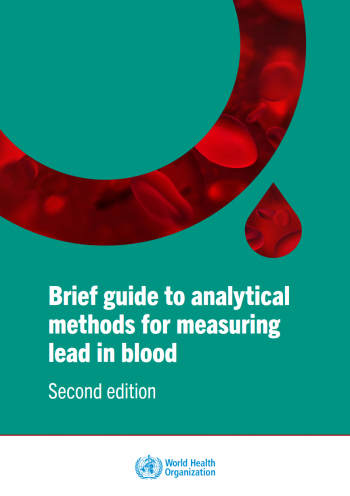Brief guide to analytical methods for measuring lead in blood (Second edition)
Lead is a toxic metal whose widespread use has caused extensive environmental contamination and health problems in many parts of the world. Lead is a cumulative toxicant that affects multiple body systems, including the neurological, haematological, gastrointestinal, cardiovascular, musculoskeletal and renal systems. Long-term effects include increased risk of hypertension, ischaemic heart disease and renal disease. Children are particularly vulnerable to the neurotoxic effects of lead, and even low levels of exposure can impair cognitive development and cause behavioural disorders. These effects can be lifelong. As a consequence of the long-term effects on health, human exposure to lead in 2017 was estimated to account for 1.06 million deaths and the loss of 24.4 million disability-adjusted life-years (DALYs), with the highest burden falling on low- and middle-income countries.
This document provides a brief overview of commonly used analytical methods for measuring the concentration of lead in blood. It is primarily aimed at informing public health personnel, scientific institutions and policy-makers who are not laboratory specialists but who may need to develop plans for conducting human biomonitoring studies, performing blood lead prevalence screening, and other public health actions related to the assessment of human exposure to lead.

 English (on author's web-site)
English (on author's web-site)
